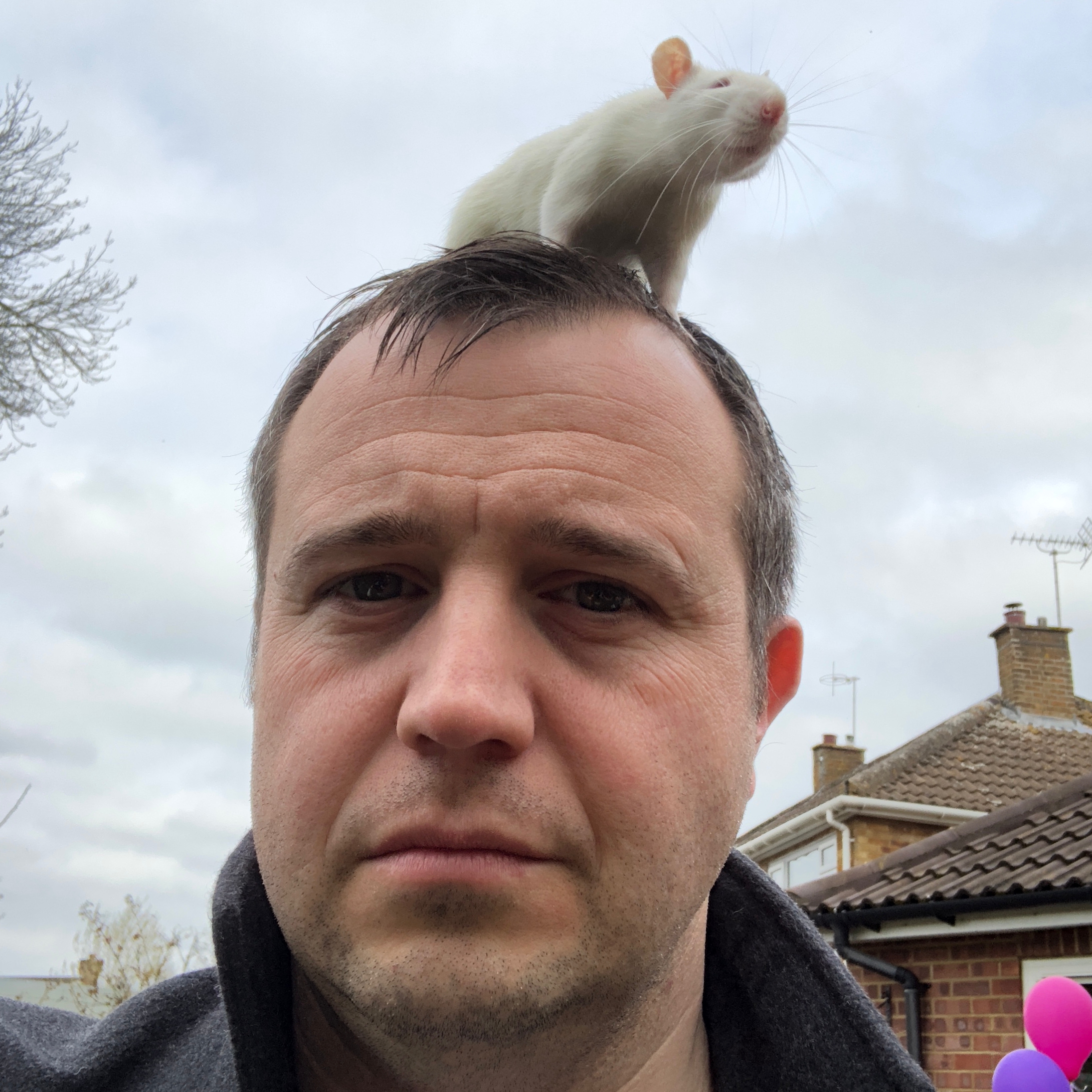Advances in technology have democratised the industry. The ability for smaller companies to compete with cutting edge technology is greater than ever before. In this blog post I talk about how I put that to use within my current position at Objective Focus.
Introduction
This is a case study of a recent challenge to build an efficient ops process within my current business. It is tailored to the online recruitment of healthcare professionals into qualitative in-depth interview. What I hope to demonstrate here is the importance of considering all elements of a process and how to bring it all together to create a seamless journey for PM, client, and respondent alike.
In my career I've been involved in development, implementation, and change management programs for some very big projects. I aim to demonstrate here that up to date technology solutions is not purely the domain of the big boys and that smaller companies are in a better position than they ever were to adopt professional and up to date systems in a relatively simple and cost-effective manner.
Fair warning up front - this is a lengthy post. I've got a lot to cover!
The Background
When I joined Objective Focus it was understood that, alongside the other day to day duties that come with being an Operations Director, one of the main challenges was to introduce a new platform and process to replace something that really wasn't delivering as expected.
I was coming from a large business where I was in charge of implementing a global workflow management process to all of the employees within the EMEA region. This was a challenge on a completely different scale but no less challenging for it.
The Challenge
The previous platform and process required that we had specialist scripting resource on hand to program our screeners. This was not a model that we felt was necessary or sustainable for the modest online screener setups that we needed to do. Additionally we were manually scheduling screened respondents to our in-depth interviews (IDIs). This was a time consuming effort and subject to human error particularly given the different timezones we were working across. We wanted a way to better automate that process to make it easier (for respondents, project managers, and clients), faster, less time consuming, and more accurate. We wanted a better way to keep our clients up to date with project progress and required respondent information.
The Requirements
Starting afresh can be a daunting prospect. It's always incredibly important to do all the required due diligence. With all the best intentions the previous adopted process didn't deliver to expectation and things needed to be right this time around. But on the flip side a clean slate provides the freedom to step back and evaluate what the business priorities are for both the present and the future. Here's what we considered to be the key drivers:
- An online data collection platform. Must be simple to use but advanced enough to handle our current qual screener requirements as well as quant interviews. We didn't want any reliance on a specific survey programmer and instead wanted our Project Managers to be able to set up and run their jobs from end to end. The platform must have data reporting and analysis options and there must be ability to access the data from outside of the platform interface.
- An automated scheduling solution - on completion of a screener we needed a respondent to be able to view available remaining appointment times, book a convenient slot, and have that system take care of confirmations, rescheduling, cancellations etc.
- A panel management system - a panel database and functionality to manage the panel, create samples, handle distributions etc.
- A mechanism for conducting the in depth interview (IDI). Needed to allow audio and video and be accessible either through computer equipment or else via toll free number.
- A workflow management tool to assist in overview of project progress and performance.
- In order to maintain a seamless respondent (and client) journey all of our software must be able to integrate with other components. Access to APIs and webhooks was a key requirement.
Those key drivers would, in theory, deliver us a process for the immediate need whilst keeping our options open for potential future development (e.g. client and supplier portals - more on that later) or potential future business opportunities requiring alternative solution. No longer would we be tied to a closed ecosystem but would have the ability to easily introduce new softwares into the process or swap out failing or outdated elements as better options became available.
The Core of the System - Data Collection
I knew the core of the system would be the data collection platform. Whilst we dealt in qualitative research, we are primarily a qual recruitment agency and our main interaction with our panel is to recruit them into qual IDIs. We do this by reaching out to our panel of double opted in healthcare professionals through online quant screeners. The existing platform we were using (Askia) was adequate in the old process but did not meet our need in the new process in a couple of key areas. Firstly it required that we had an experienced Askia scripter to program all jobs. That was not an ideal model for us. We wanted less dependency on one person, reduced headcount, and faster turnaround of required changes. We wanted PMs to be self-sufficient in set up of their screeners and so for that we needed a system that was simple, yet powerful enough to be handled by novices. At this point it's worth remembering that I spent much of my early career in scripting and DP. I've learnt the ins and outs of languages specifically designed for MR purpose. I was one of the first to fully implement SPSS Dimensions into a production environment. This is my background and I'm a harsh critic of many of the legacy platforms. I'd not previously had call to assess a data collection environment on its ability to be run by project managers with varying degrees of technical ability. I was confident the technology was there but had it made it to market yet in an industry that, too often, suffers a slow pace of technological change?
I'll cut to the chase. The answer, for us at least, is a resounding yes. We did comprehensive due diligence and opted for Qualtrics. In a future blog post (now available here) I intend to review the Qualtrics platform as well as our on-boarding process but for now I'll say that it performed beyond my initial expectations. We utilised both the research suite element as well as their Target Audience component to handle the panel management side. The survey design is through an online GUI and is extremely simple to work with whilst still allowing for some advanced options. It wouldn't be the ideal option for some of the most complex studies that I've worked on in my time but it is more than capable of handling the vast majority of online interviewing requirements.
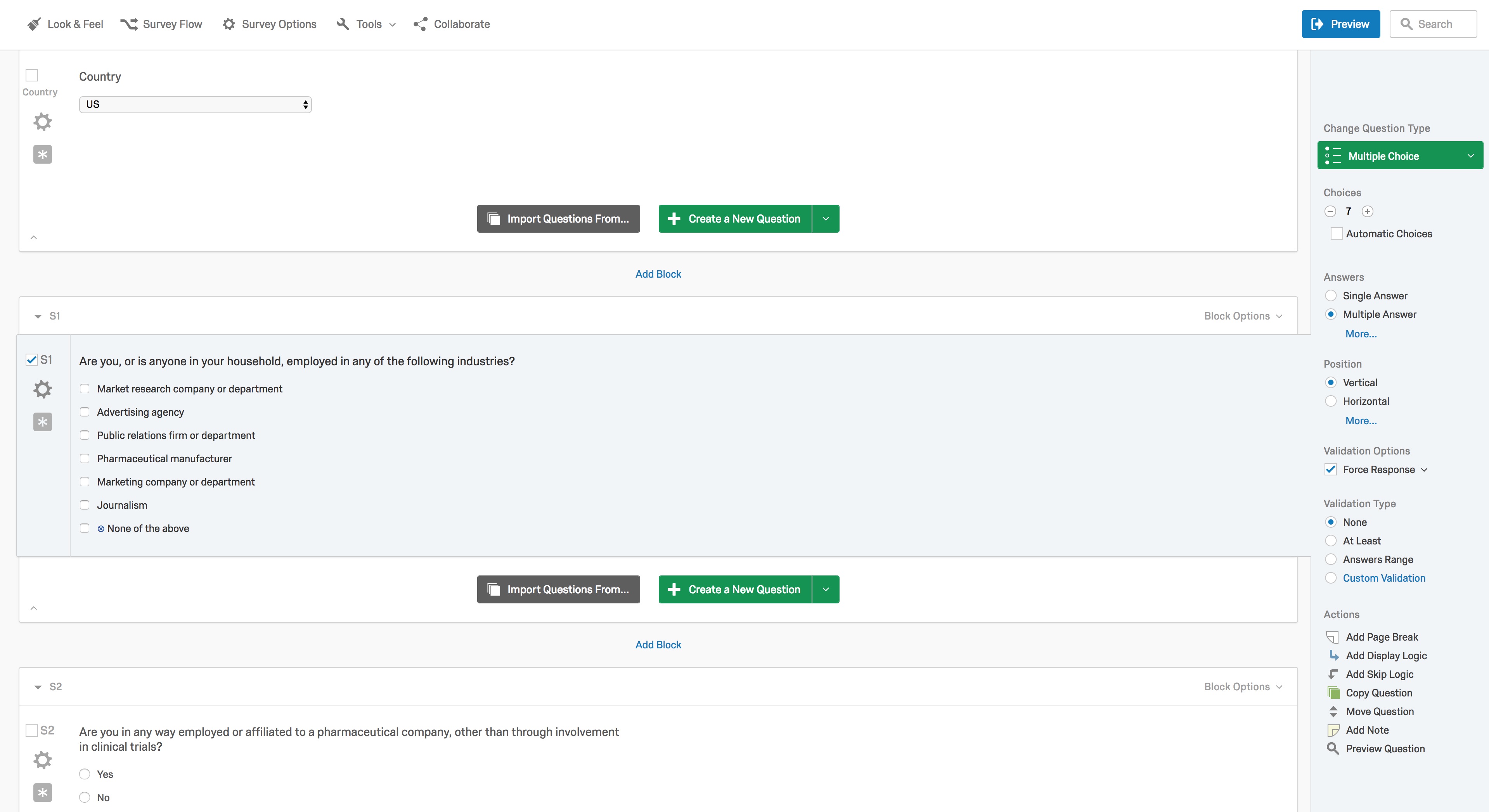
Image 1: That's better! (Qualtrics interface)
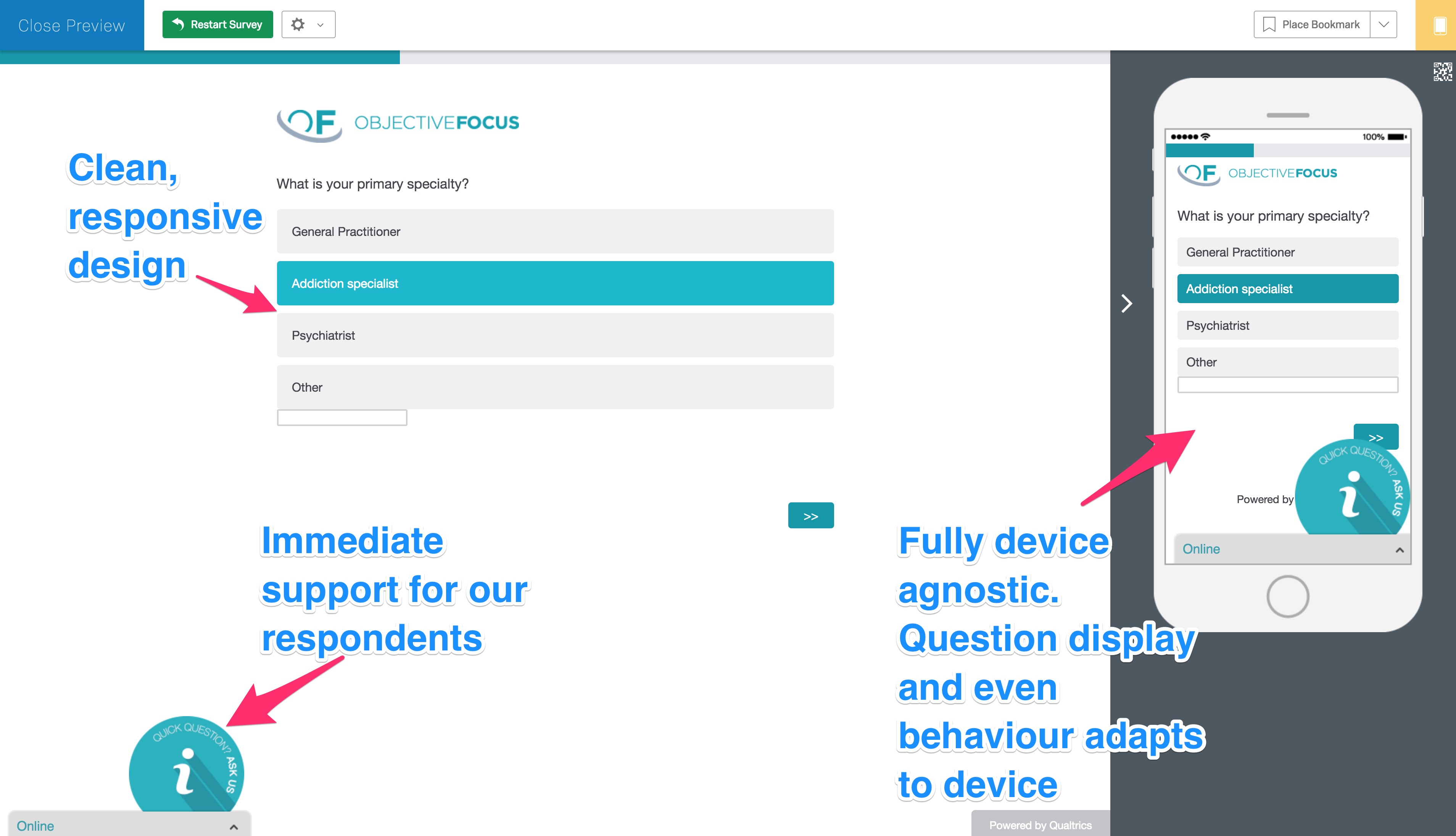
Image 2: Qualtrics Survey
From an implementation perspective Qualtrics was a dream. After initial setup by myself to ensure that we had a robust survey shell to work into as well as a clean, device agnostic, template for look and feel and functionality of the surveys on computer, mobile or tablet we were set to go. I provided introduction and basic training and documentation and gave the PMs examples to practice on. With some basic support from myself and the Qualtrics support team (who are first class - seriously the best support team I've had the pleasure of working with) they were running live studies through Qualtrics within a week. Success!
Scheduling solution
We needed a scheduling solution and one that we could seamlessly integrate into our respondent journey. There are many scheduling web application solutions available to consider and I tested as many of them as I could. None of them met my exact desired need but one came very close. So close that we were prepared to accept some basic compromise on functionality (which I'll outline shortly).
The winning candidate came out on top for a few main reasons. Firstly the scheduling process is simple and fast and the interface is modern and pleasing - it complemented our design ethos and survey template nicely. Secondly it handled multiple time zone requirements well (we can potentially have three different time zones in play for any individual schedule - respondents, PMs, and clients). Thirdly we could embed it into our survey flow in such a way as it just appears to be part of the survey itself. That was important for us both from a respondent perspective (it give them a smooth and joined up and simple experience) and from a data perspective - for reporting purposes we ideally wanted one source of data and the ability to utilise webhooks and the Qualtrics API allowed us to push all scheduling information back into the Qualtrics data record in real time.
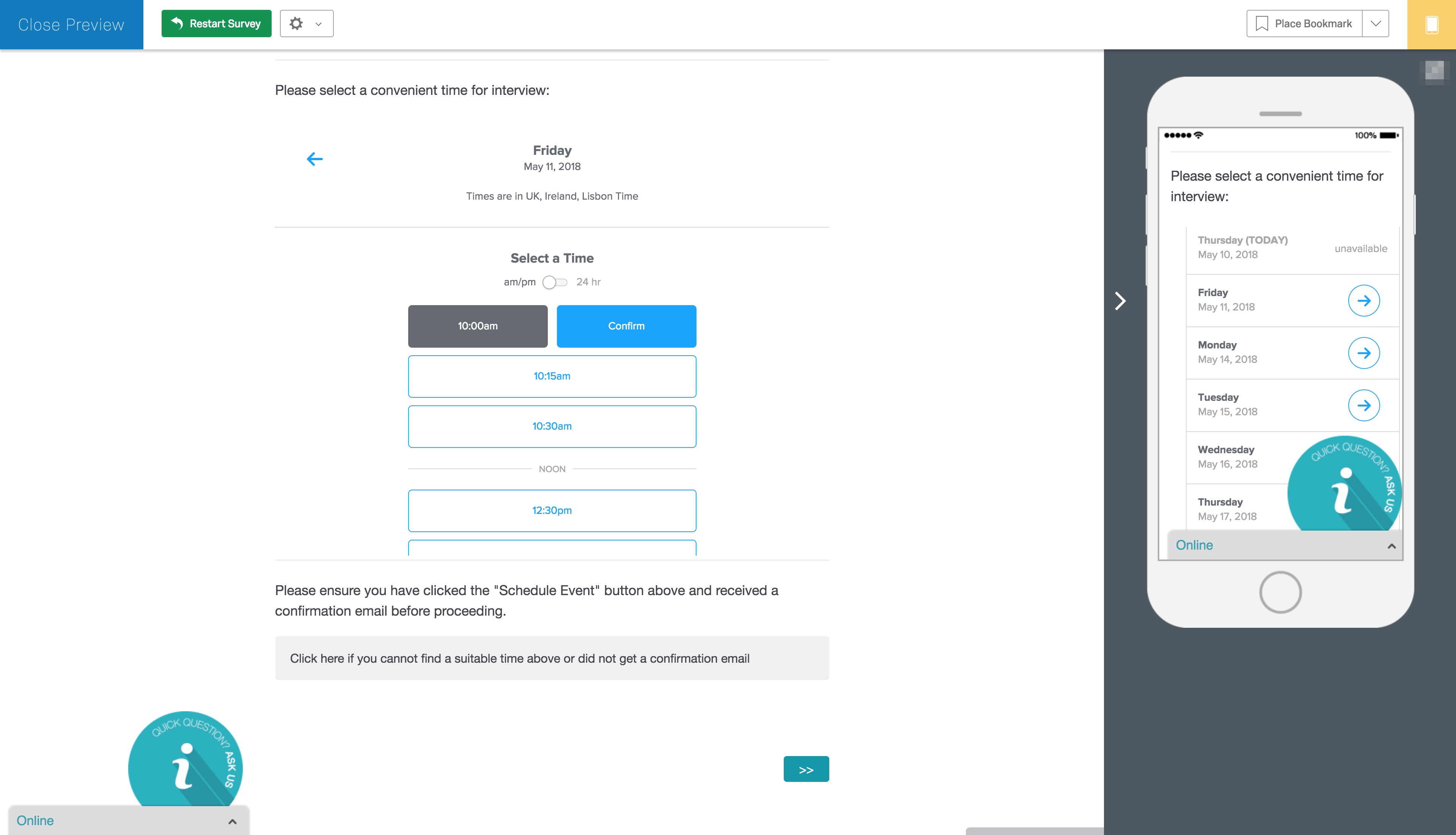
Image 3: Embedded Smart Scheduling
We additionally use the webhooks to push out alerts to the PMs and to the client. They receive these alerts in real time.
I mentioned negative aspects - in the case of our preferred solution our one complaint is that it considers each account calendar to be unique. What I mean by that is that with the calendar conflict option turned on it will avoid double booking a specific timeslot - that is great within jobs and typically what we require but it is not great across jobs. There is no way to have it treat each project calendar uniquely without using multiple accounts. Which is what we do. It's fine but the management of those accounts is a little tedious. Some other scheduling solutions allow you to set up specific resources/rooms without requiring additional accounts. That's a better fit for us but, overall, it is outweighed by our preferred solution's other positive attributes - namely the smooth respondent process and integration into our process. Given further time and resource I would have considered whether a bespoke scheduling development would have been worthwhile for us.
The IDI (in depth interview)
Traditionally the process had involved an exchange of telephone numbers. Either the client or one of our moderators would call the recruited respondent directly. However for various reasons, including GDPR consideration, we wanted to move away from that process and control the interviewing system ourselves. It was important that we lost little of the simplicity or flexibility of direct calling. Additionally we wanted to offer both audio and video interviewing as standard, and provide maximum flexibility in whether the client or respondent entered the call through an internet connection or through a toll-free dial-in number. We wanted to be able to provide recordings of all interviews as standard.
There are many web conferencing systems to consider. We opted to use Zoom. Zoom has great functionality, integrations, call quality, and competitive pricing plans. Additionally it offers an automated transcription service on all calls. See my upcoming blog post on automated transcription to find out my views on this! (now available here.)
Client Portals
The typical main delivery to our clients is the recruitment of high quality respondents to take part in in-depth interviews (IDIs). Along the way the project manager will keep the client updated on recruitment progress and interview bookings etc. On occasion we will handle the moderation of interviews in-house and will pass on interview recordings to transcribers who will pass back transcript documents. All of this had been handled manually. Our integrated screening, scheduling, and interviewing process now enabled me to consider how we could smarten up this element of delivery.
Client portals are not a new or unique idea. However, it's surprisingly rare to see good examples as a standard delivery and they've tended to be add-ons to large projects. Our view was that we should try and introduce these as standard offering. I'm now at the stage of having produced a few proof of concepts as well as some bespoke portal deliveries on live projects with particular demands. I believe that is the sensible approach for the future - a standardised online portal to cover standard functionality which is further supported by bespoke (and paid for) portal development for projects that have specific requirement.
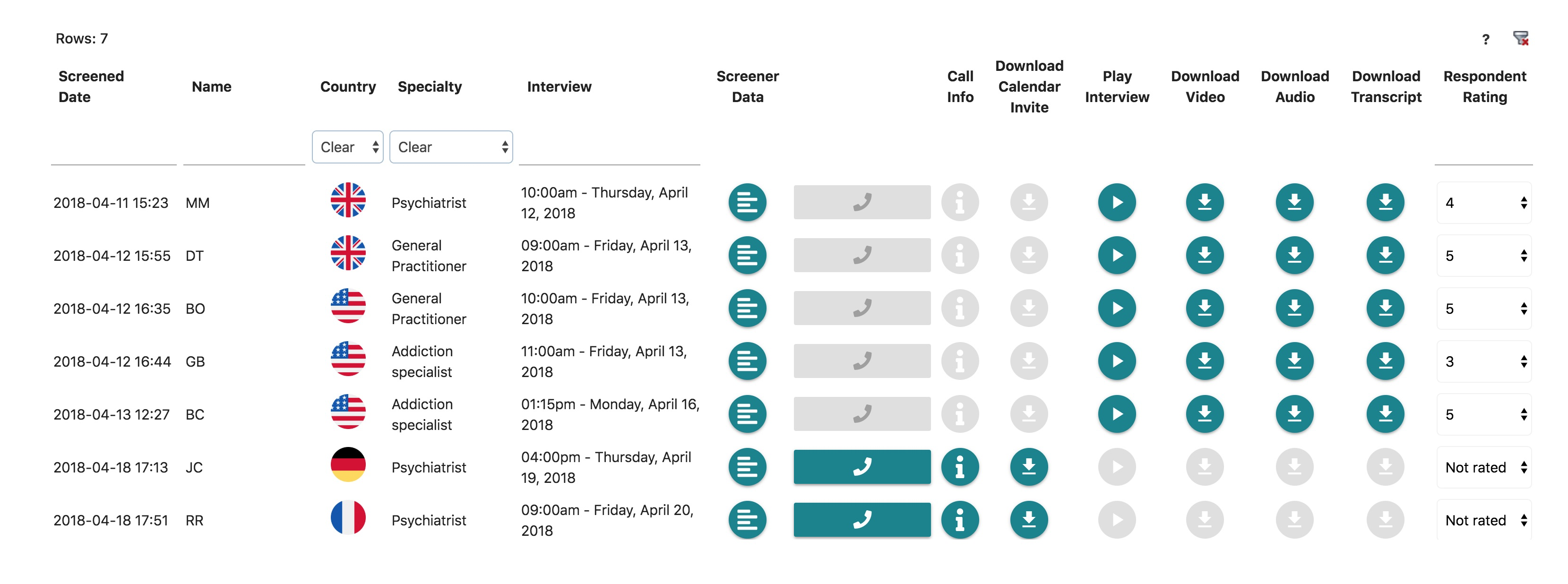
Image 4: An early version client portal
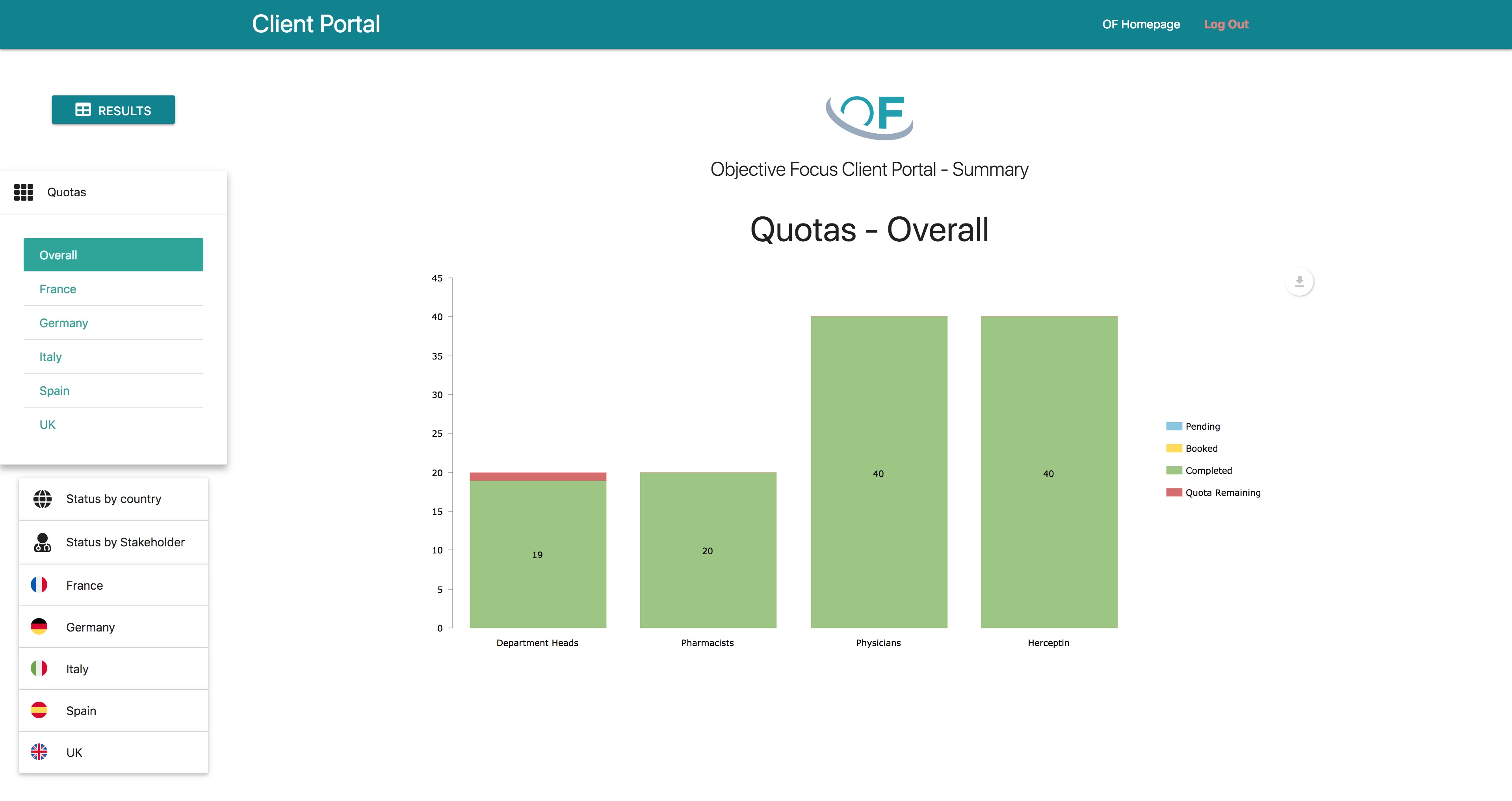
Image 5: Quota visualisations in a client portal
Feedback from clients, moderators, and transcribers who have used our bespoke portals has been universally positive. There are improvements to be made (and noted in my Trello board on the topic - see further down!) but we're on the right track.
Internal Project Management
Communication without borders
How do you effectively communicate with your team when you work 4 days a week at home, 1 day in the office, and half the team is in North America? That was a challenge that the business hadn't quite cracked when I started. Email and Skype were the order of the day and, for the most part, they worked as expected. But the quickfire communication was lacking. Email was too slow, Skype too formal for very brief communications and whilst Skype and Google did have instant chat messaging it was lacking. Thankfully there are other established options and Slack is a well known example. Slack is a lifesaver for the small business and the remote worker (and beyond). A clean modern and unobtrusive interface, Slack allows you to set up channels or chat one to one. For us the Channel option was great - essentially chat rooms specific to projects or topics of current interest. You're involved in the chats that you want to be. Slack was a game changer for us. It slashed our email use and opened up communication in a way that we struggled with previously. There are lots of competitors in the market but I'd recommend checking Slack out to anybody. Best of all it's free - although if you do seriously adopt it then you'd likely consider moving to a paid tier (primarily to have access to all past comments. The free version limits your view to the 10k most recent messages).
Workflow management tool
As direct line manager to the project managers I was a little concerned to understand that there was no real mechanism for me to keep abreast of project progress and performance without directly querying it. I knew from past, and sometimes painful, experience the delicate balance required to not overburden a busy employee with further systems and particularly to request inputs that don't benefit them directly. Having to report back to management is a fact of life but I was keen that we adopted an approach that would be useful to both PM and manager. I was careful to keep them involved in the decision making and process design in order that they were immediately comfortable and engaged with what was being asked. I made some mistakes along the way. The first solution we looked at was, I thought, the simplest and most effective. We trialled a product called Dapulse (subsequently rebranded as monday.com). I created a template of process steps with the expectation that the PM ticked off each process step as it completed or else marked it as In progress, subject to delay, minor issue, major issue etc. Comments could be provided at each stage and the traffic light style visualisation of the project process was an easy at a glance view for a manager to have a take on the status of a project at any given time. It wasn't a success. The templated structure I'd created was too rigid, the level of detail was too high and the PMs struggled to keep it up to date without prompting. Having come from a huge implementation programme that required far greater levels of record keeping, and much less flexibility then I had felt sure that this would be an easy implementation. I was naive and it was back to drawing board.
Eventually we settled on Trello. Trello will be well known to many of you but if you haven't heard of it then I recommend checking it out. It's very visual, very engaging, and makes collaboration and sharing of information incredibly simple. We work on the principle of active projects occupying a specific Project owners "Board". Each project is in its own column with a series of cards that denote particular aspects of a project e.g. General Project overview which would include client details, research aims etc., a project launch checklist, recruitment status update, invoicing updates etc. The system is flexible to add, remove, or amend cards or details as needed. You can tag people into updates to alert them to specific information and members of a board can add their own comments to any aspect. You can additionally subscribe to updates so you are automatically alerted should something change on a given board or project or element of a project. The PMs love using it because it's useful to them to manage their work, and management has the oversight they need without prompting. We do still have regular project status update meetings but Trello drives the discussion, nothing comes as too much of a surprise and we can hone in on only the points that need to be addressed.
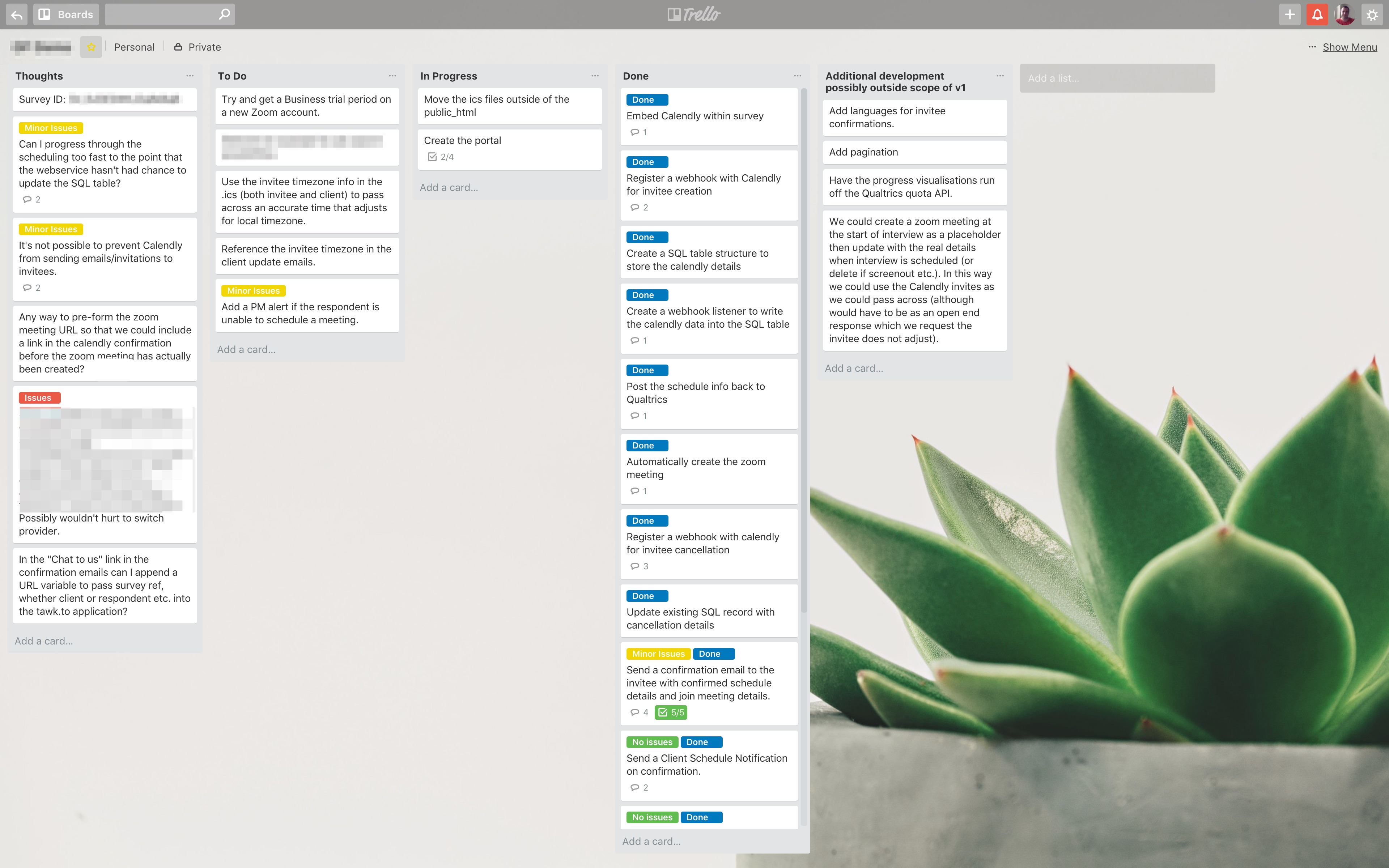
Image 6: One of my personal Trello boards in action!
And did I mention? Trello is also free! There is a paid tier but we're not at a position that we really need this right now. It would be a very modest outlay should we hit limitations of the free tier.
In conclusion
The workflow I introduced and have demonstrated here was heavily tailored to the specific business of online recruitment of doctors for in depth qual interviewing. But I hope it shows some areas that resonate within your business and how this is now achievable for a very modest outlay to smaller businesses. For me it is a great reminder of how far we have come since I started in this industry and even within the last few years. Technology should be disruptive to our industry and this, to my mind at least, is cause for celebration. It should push everyone forward. If you're a smaller boutique agency then you have never had better opportunity to adopt great technologies that play nicely with one another and come at modest cost. If you're a large agency then I hope you already, as standard, have great systems to meet your scale and that you're on the bleeding edge of technological advancement to keep this industry relevant and to feed some of the smaller agencies tomorrow's play things!
From a personal perspective I'm grateful for the opportunity and support that Objective Focus has given me and I'm pleased with the result that we have delivered into the business. I've had almost free rein in the new design and the application decisions and my decisions were supported by the owner, but crucially by the PMs who use these processes day to day. I've achieved what I set out to achieve for Objective Focus and I can now move on to the next challenge knowing that I leave a good foundation process and areas that can be additionally advanced upon, particularly in the portal development area. I'll be leaving in an amicable, managed, and agreed manner and ready for my next challenge. Hit me up if you think that could be with you!
